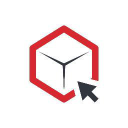How I Took My Woodworking Hobby Full Time To Build A Successful Brand
Note: This business is no longer running. It was started in 2017 and ended in 2024. Reason for closure: Acquired by Tops To Floors.
Hello! Who are you and what business did you start?
My name is Sasha Weekes and I’m the 25 years old owner of Timber Grove Studios. Our home-based woodshop is nestled in the hills of PEI’s countryside, and we specialize in decorative shelving and home decor with a focus on minimalist design and simplicity. Each piece is made to order with 20+ color options, meaning it will be the perfect fit for each customer's space. We ship Canada and U.S. wide.
Etsy has been the main platform since starting up, although I finally have a standalone website up and running as well which I hope to grow in order to diversify sales channels. I have no current employees, although I have a wonderful subcontractor who works from home to cut and stain wood for me. She’s paid by the piece so it’s a great system for both of us. My partner Mario works full time but has recently joined me on the side and we’ve released a new line of steel table bases together which has been a ton of fun - he is an awesome welder.
After launching in 2017 and being skeptical about making sales of large items online, I was absolutely proved wrong! The business outgrew our small condo...

Download the report and join our email newsletter packed with business ideas and money-making opportunities, backed by real-life case studies.

Download the report and join our email newsletter packed with business ideas and money-making opportunities, backed by real-life case studies.

Download the report and join our email newsletter packed with business ideas and money-making opportunities, backed by real-life case studies.

Download the report and join our email newsletter packed with business ideas and money-making opportunities, backed by real-life case studies.

Download the report and join our email newsletter packed with business ideas and money-making opportunities, backed by real-life case studies.

Download the report and join our email newsletter packed with business ideas and money-making opportunities, backed by real-life case studies.

Download the report and join our email newsletter packed with business ideas and money-making opportunities, backed by real-life case studies.

Download the report and join our email newsletter packed with business ideas and money-making opportunities, backed by real-life case studies.




























